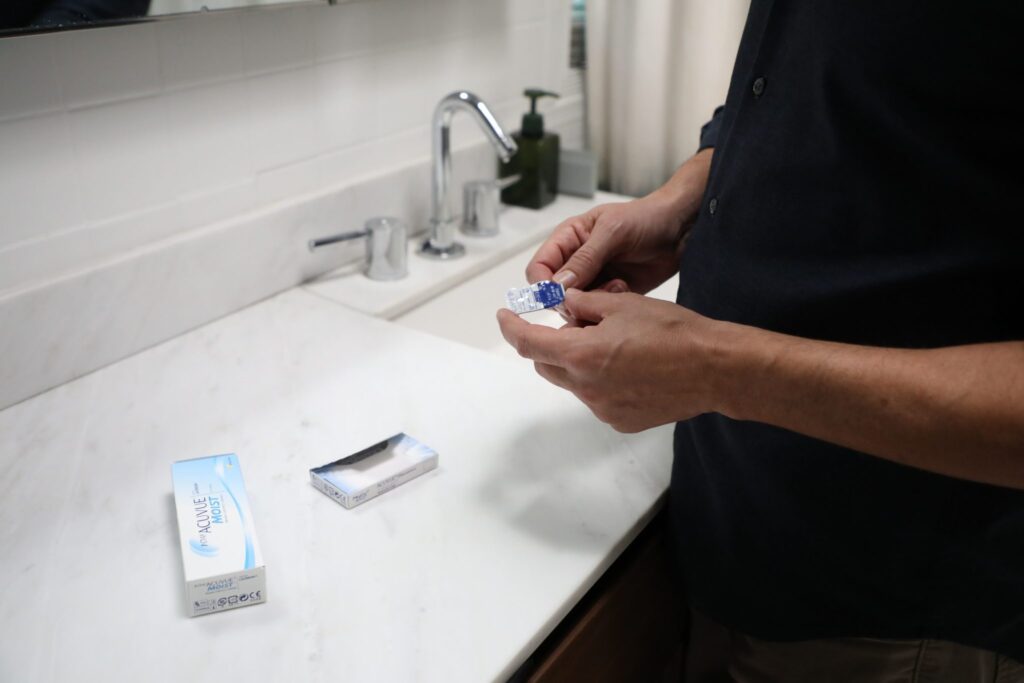More than 135 million people depend on contact lenses for precise and comfortable vision. They are an attractive option to using eyeglasses because of their compact nature and ease of use. However, unlike eyeglasses, it will take some time before you get used to contact lenses. According to professionals, most first-time wearers take up to two weeks to adjust to their new lenses. Below are a few tips that can smoothen first-timers’ transition to contact lenses.
Learn how to wear your contact lenses
Wearing contact lenses is certainly a daunting task for most first-timers. While your eye doctor will certainly give directions, below are a few tips to remember when wearing contact lenses:
- Clean and dry your hands before touching the contact lenses
- Place one lens on the tip of your finger. Make sure other fingers stay out of the way.
- Make sure the lens is not inside out, the lens profile is curved and well-oriented.
- Look straight into the mirror, and use the index finger of your other hand to hold the upper eyelid of the eye against the eyebrow and the middle finger to pull the lower lid.
- Place the contact lens over the iris, ensuring its edges touch the eye.
- Release the eyelids and blink or gently massage your eye for the lens to settle.
- Repeat the same procedure in the other eye.
Always clean your contact lenses
Observing good hygiene when wearing contact lenses is also important. Hygiene when handling contact lenses begins with a thorough cleaning of your hands with soap and water before touching them. Your hands should be dry and germ-free. You should also clean your contact lenses with appropriate solutions. Contact lenses cleaning solutions include:
- Contact solution – a special solution that disinfects and hydrates contact lenses. Always store your contacts in this solution when you are not wearing them.
- Saline solution – is a saltwater solution used to rinse off contacts before wearing.
That aside, NEVER reuse cleaning solutions. It is advisable to use fresh solutions every time. You should also replace the lens case after three months to prevent infections.
Follow the recommended wearing and replacement schedule
You should follow your eye doctor’s prescription for your contacts to function properly. For instance, you should only wear them for the required period. You should also remove them before sleeping, unless your lenses are continuous wear contacts. You should follow these and other recommendations from your doctor to avoid further damage to the eye.
Know the normal side effects
Contact lenses are a foreign object in your eye, which takes time to adjust. First-timers should expect the following mild eye issues:
- Blurred vision – it is normal to experience blurriness during the first few days. This distortion in vision often occurs because of dryness, but using medicated eye drops can help. You shouldn’t drive or ride a bicycle with a distorted vision.
- Discomfort – it is normal to blink and tear more as you adjust to wearing contact lenses. However, you’ll start feeling normal after several uses. Also, hydrating your contact lenses adequately before wearing them alleviates mild discomfort.
- Eye fatigue – you should expect some eye fatigue after wearing contact lenses for some period. However, you can avoid it by wearing your contacts for a few hours at first and adjusting over time.
Know when to call your eye doctor
While the abovementioned issues might be considered normal, you should call your eye doctor if they persist. You should also watch out for the following side effects:
- Eye strain – this differs from eye fatigue and varies from one person to another. However, eye strain is largely marked by light sensitivity, double vision, burning sensation, and headache. Eye strain often indicates a problem with the length of wear or type of contact lens used.
- Infection – eye infection might occur due to improper use of contact lenses. Typical signs of eye infection include irritation, vision disturbances, and discoloration. You can avoid eye infections by maintaining hygiene, storing your contacts according to manufacturer guidelines, and not wearing contacts to the swimming pool or hot tub.
- Prolonged irritation – minor irritation during the first few days of wearing contact lenses is normal. However, if discomfort and irritation persist for more than two weeks, there is a problem with your lenses or general eye health. You should discontinue contact use and book an appointment with your eye care practitioner.
Most unusual side effects of wearing contact lenses occur due to improper use or problem with the lenses. Improper use includes not using the right solution to clean your contacts, wearing contacts for long hours, and poor storage. Consult your eye care provider immediately if you experience any of these conditions.
The Bottom Line
Contact lenses are a safe and excellent method of correcting vision. Adjusting to wearing contact lenses might prove challenging, but you won’t experience long-term discomfort and vision issues after adjusting. Most issues experienced during the first days vanish over time. However, you should care for and protect your lenses.

